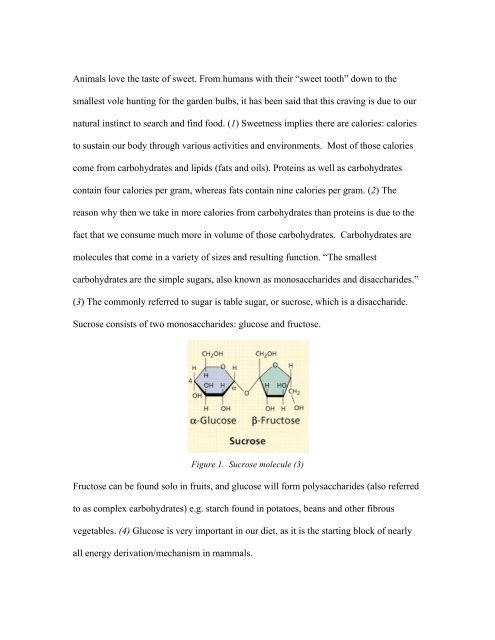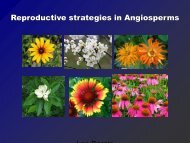ARTIFICIAL SWEETENERS: - University of Maryland
ARTIFICIAL SWEETENERS: - University of Maryland
ARTIFICIAL SWEETENERS: - University of Maryland
Create successful ePaper yourself
Turn your PDF publications into a flip-book with our unique Google optimized e-Paper software.
Animals love the taste <strong>of</strong> sweet. From humans with their “sweet tooth” down to the<br />
smallest vole hunting for the garden bulbs, it has been said that this craving is due to our<br />
natural instinct to search and find food. (1) Sweetness implies there are calories: calories<br />
to sustain our body through various activities and environments. Most <strong>of</strong> those calories<br />
come from carbohydrates and lipids (fats and oils). Proteins as well as carbohydrates<br />
contain four calories per gram, whereas fats contain nine calories per gram. (2) The<br />
reason why then we take in more calories from carbohydrates than proteins is due to the<br />
fact that we consume much more in volume <strong>of</strong> those carbohydrates. Carbohydrates are<br />
molecules that come in a variety <strong>of</strong> sizes and resulting function. “The smallest<br />
carbohydrates are the simple sugars, also known as monosaccharides and disaccharides.”<br />
(3) The commonly referred to sugar is table sugar, or sucrose, which is a disaccharide.<br />
Sucrose consists <strong>of</strong> two monosaccharides: glucose and fructose.<br />
Figure 1. Sucrose molecule (3)<br />
Fructose can be found solo in fruits, and glucose will form polysaccharides (also referred<br />
to as complex carbohydrates) e.g. starch found in potatoes, beans and other fibrous<br />
vegetables. (4) Glucose is very important in our diet, as it is the starting block <strong>of</strong> nearly<br />
all energy derivation/mechanism in mammals.




